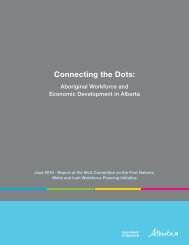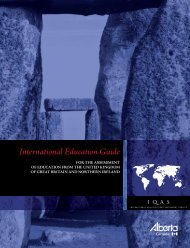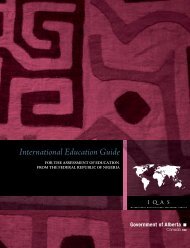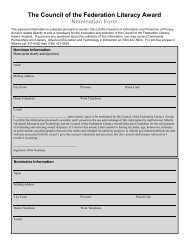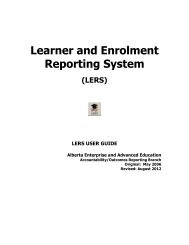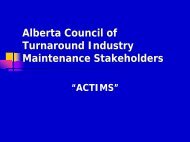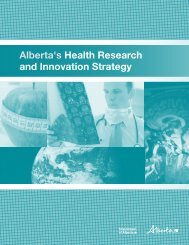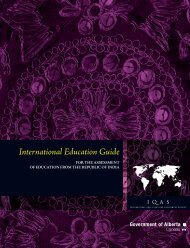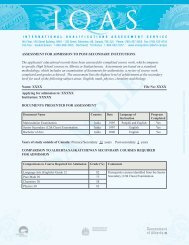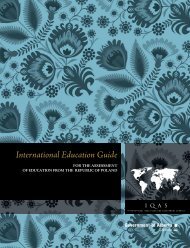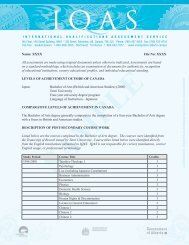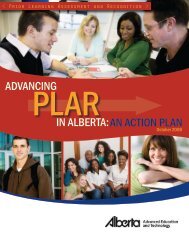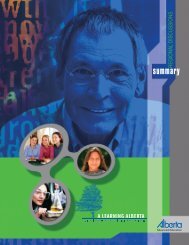International Education Guide - Enterprise and Advanced Education ...
International Education Guide - Enterprise and Advanced Education ...
International Education Guide - Enterprise and Advanced Education ...
Create successful ePaper yourself
Turn your PDF publications into a flip-book with our unique Google optimized e-Paper software.
.18<br />
INTERNATIONAL EDUCATION GUIDE for the assessment of education from the Islamic Republic of Pakistan<br />
In 2005, 16.8 million students, or about 86 per cent of the<br />
target age group, were enrolled in 156,732 primary schools.<br />
Due to a high dropout rate, only about 52 per cent of<br />
children in the age group completed primary education. A<br />
large gender gap remained in rural areas, where six female<br />
students attended for every 10 male students. A variety<br />
of factors have contributed to the low enrolment <strong>and</strong> high<br />
dropout rate in primary schools, including poverty, child<br />
labour, rapid population growth, poor access to schools<br />
in rural areas, lack of essential teaching facilities, teacher<br />
absenteeism, poor quality of education <strong>and</strong> the perceived<br />
irrelevance of education for girls.<br />
The language of instruction is usually Urdu, the national<br />
language. Some schools teach in a regional language; for<br />
example, there are many Sindhi-language schools in Sindh<br />
province. Main subjects include:<br />
• regional language<br />
• Urdu (introduced at Grade 3 in schools teaching in a<br />
regional language)<br />
• arts <strong>and</strong> crafts<br />
• mathematics<br />
• science<br />
• Pakistan studies<br />
• Islamiyat/Islamiat (alternative spellings)<br />
• health <strong>and</strong> physical education<br />
Teaching at primary schools officially requires possession of<br />
a one-year Primary Teaching Certificate, with entry based<br />
on possession of the Secondary School Certificate. However,<br />
about a quarter of primary school teachers are untrained.<br />
Middle School <strong>Education</strong><br />
(Grades 6 to 8)<br />
Middle school education lasts three years (Grades 6 to<br />
8) <strong>and</strong> is geared to students aged 10 to 12. Although<br />
middle school education is often grouped with Grades<br />
9 <strong>and</strong> 10 under the general term “secondary education,”<br />
the government plans to eventually integrate primary <strong>and</strong><br />
middle school education into one stage called elementary<br />
education (Grades 1 to 8).<br />
In 2005, approximately 5.2 million students, or about 52<br />
per cent of the target age group, were enrolled in 39,370<br />
middle schools. Due to the high dropout rate, only about<br />
18 per cent of children in the target age group completed<br />
middle school.<br />
The language of instruction remains Urdu or a regional<br />
language, <strong>and</strong> English is introduced as a compulsory<br />
subject. Main subjects include:<br />
• Urdu<br />
• English<br />
• regional language, Arabic, Persian, <strong>and</strong> so on<br />
• mathematics<br />
• science<br />
• Pakistan studies or social studies<br />
• Islamiat (for Muslims) or ethics (for non-Muslims)<br />
Upon completion of their study, students take the Middle<br />
St<strong>and</strong>ard Certificate Examination administered at the<br />
district level. Examination results are used for awarding<br />
merit-based scholarships.<br />
Teaching at middle schools officially requires possession<br />
of a one-year Certificate in Teaching, with entry based on<br />
possession of the Higher Secondary Certificate.<br />
Secondary <strong>Education</strong><br />
(Grades 9 <strong>and</strong> 10)<br />
Secondary education lasts two years (Grades 9 <strong>and</strong> 10)<br />
following the completion of middle school <strong>and</strong> is geared to<br />
children aged 13 to 14. In Pakistan, the term “secondary<br />
education” may also be used to describe the combination of<br />
middle school <strong>and</strong> secondary school (Grades 6 to 10) or the<br />
entire post-primary school education (Grades 6 to 12).<br />
In 2005, over 2.1 million students were enrolled at 22,909<br />
secondary schools. Only about 11 per cent of children in the<br />
target age group completed secondary school.<br />
The language of instruction is Urdu. Students must study<br />
a few compulsory subjects plus additional subjects based<br />
on a chosen course group. On completion of their studies,<br />
they sit examinations administered by the various Boards




